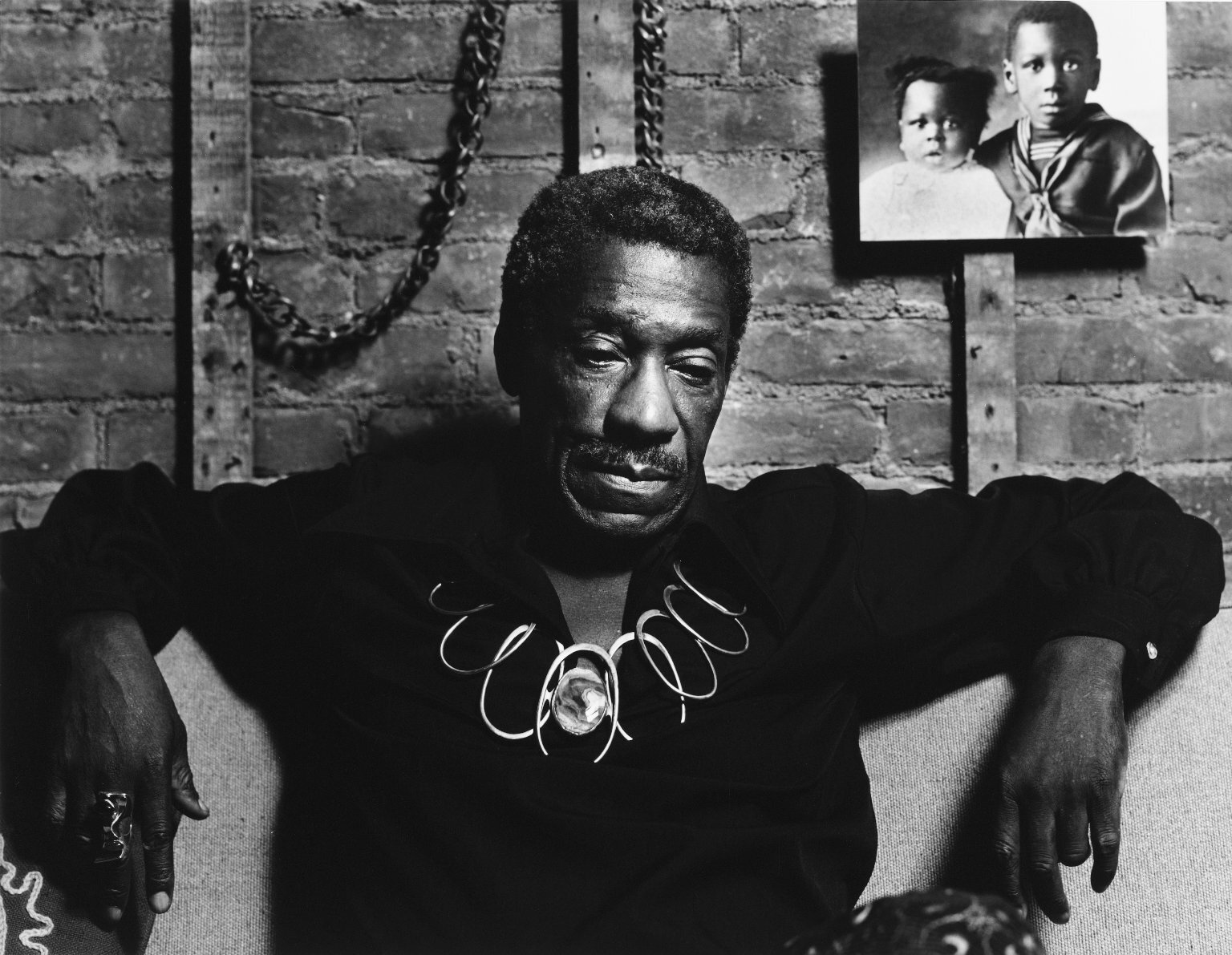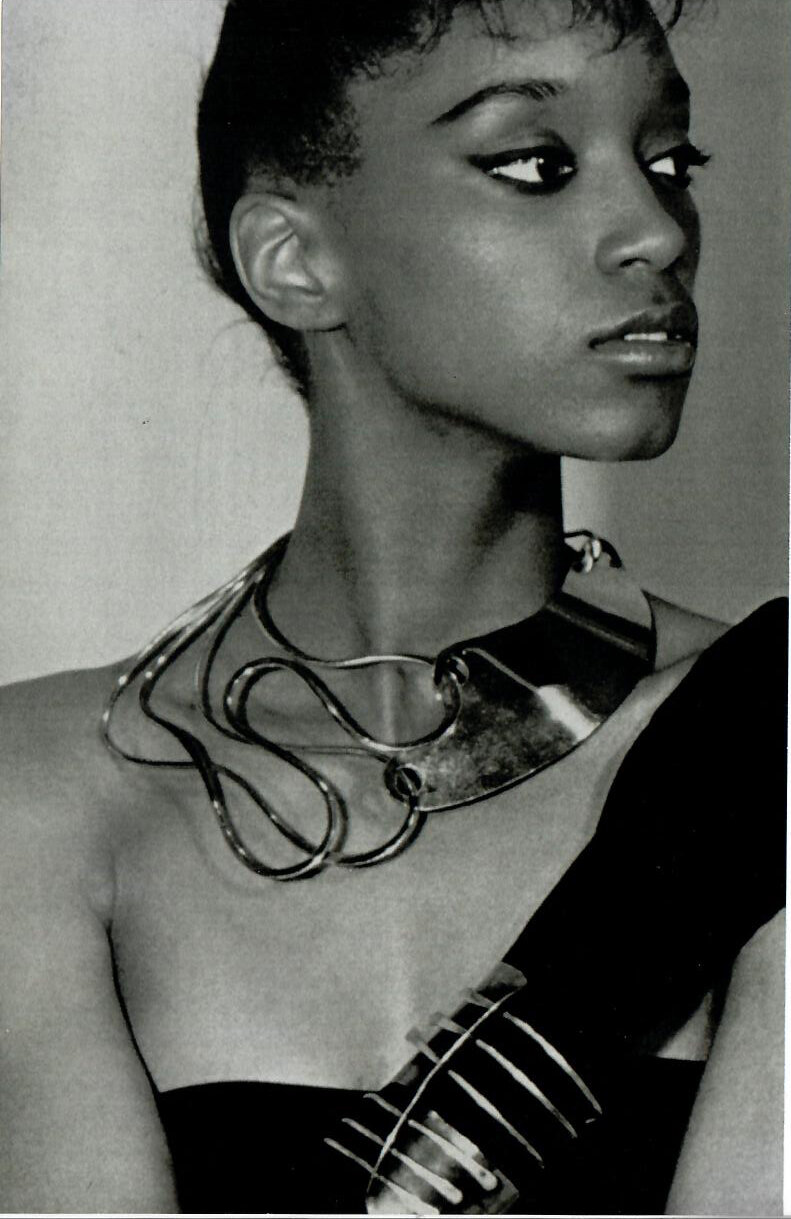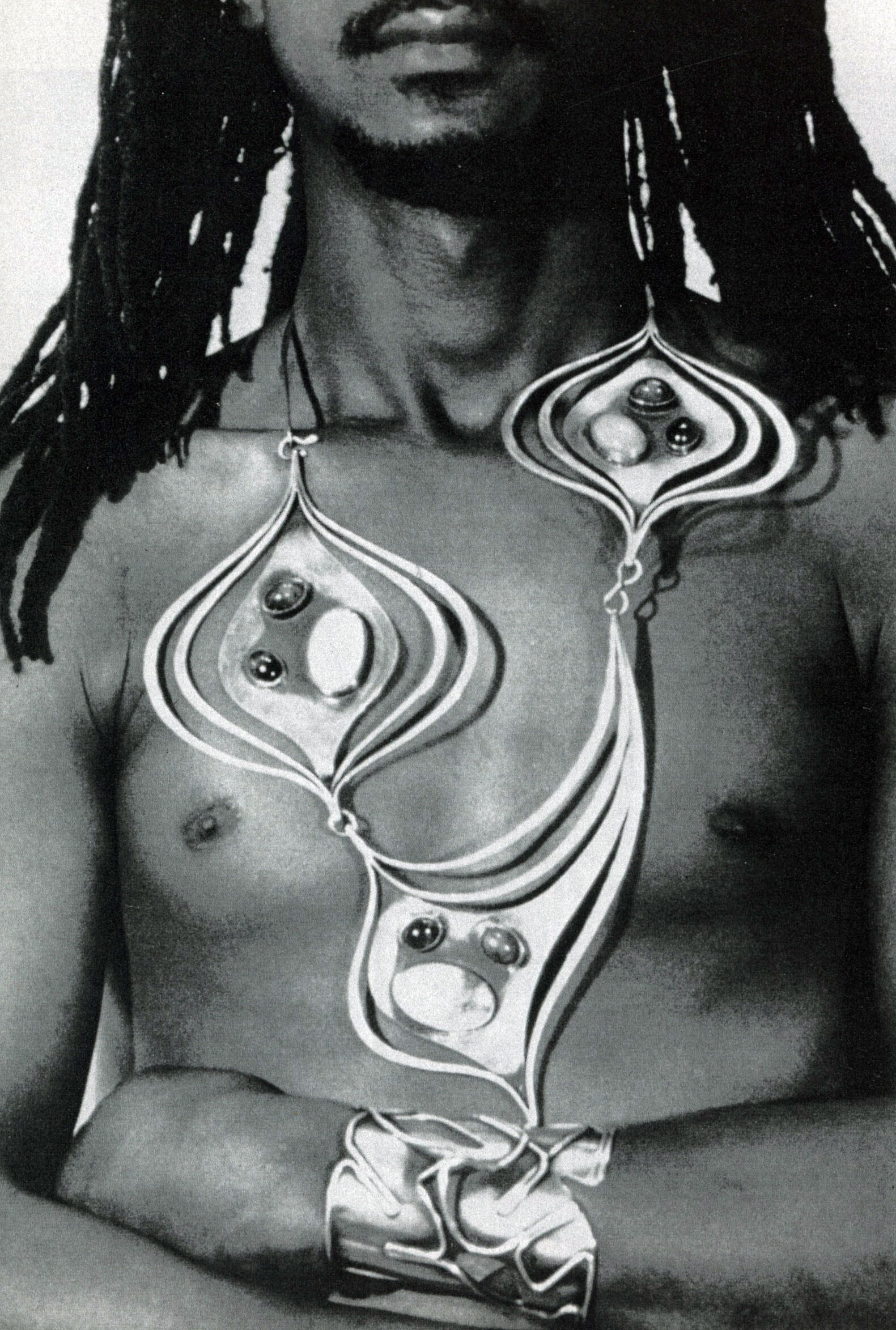The Life and Work of Art Smith
Art Smith, 1979. Photography Arthur Mones (American, 1919-1998). Gelatin silver photograph, image: 10 1/2 x 13 1/2 in. (26.7 x 34.3 cm);. Brooklyn Museum, Gift of Wayne and Stephanie Mones at the request of their father, Arthur Mones, 2000.89.36. © artist or artist's estate
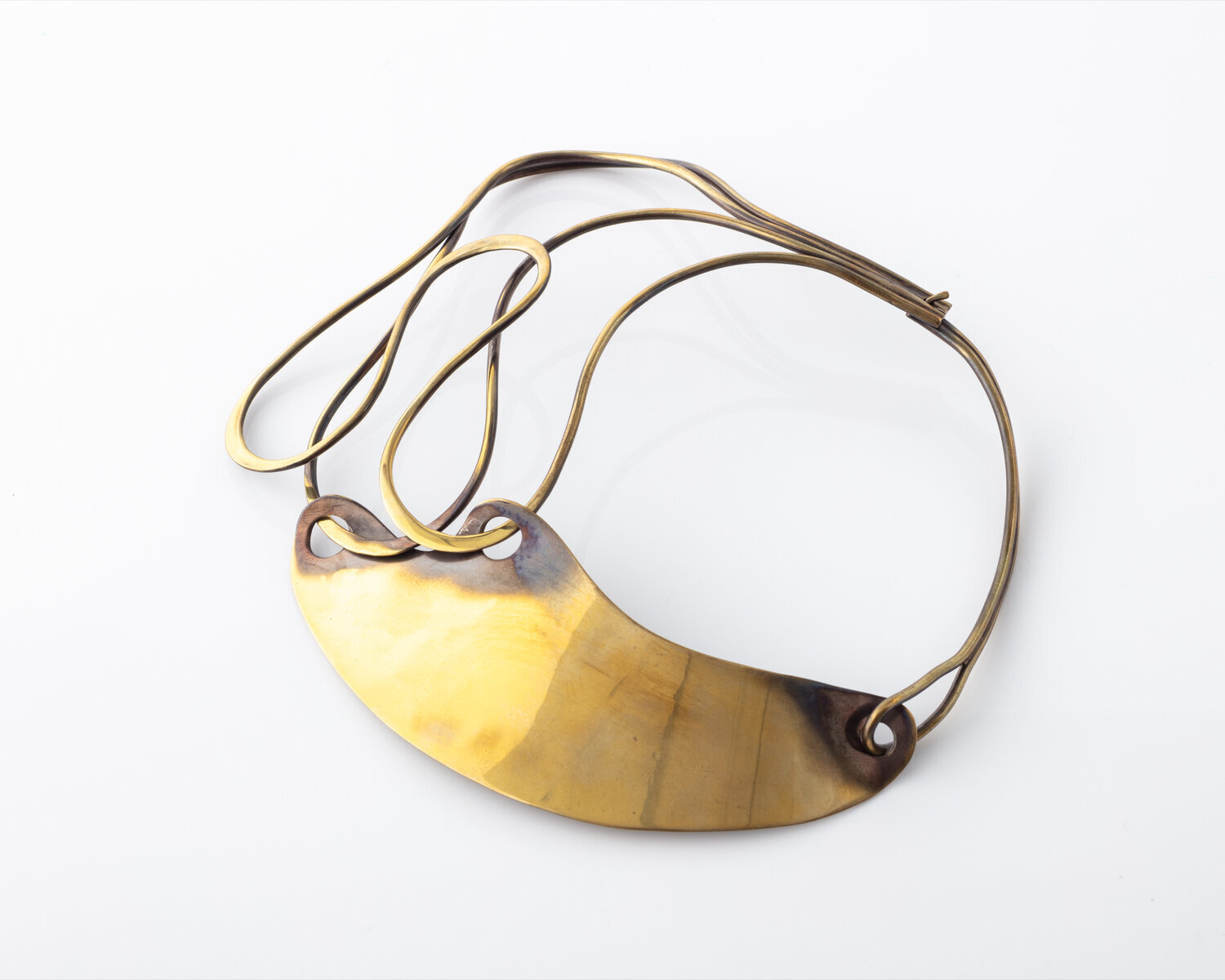
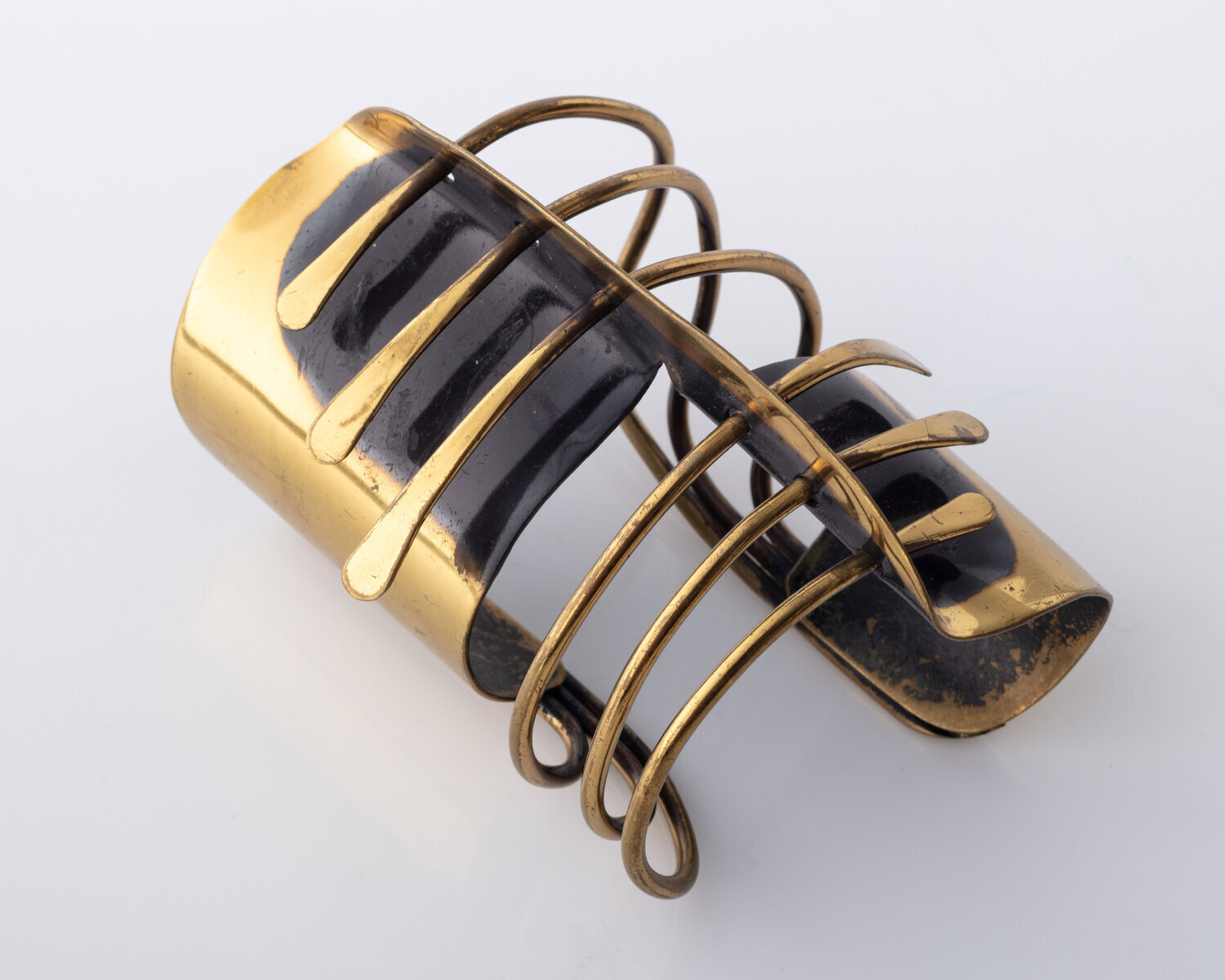
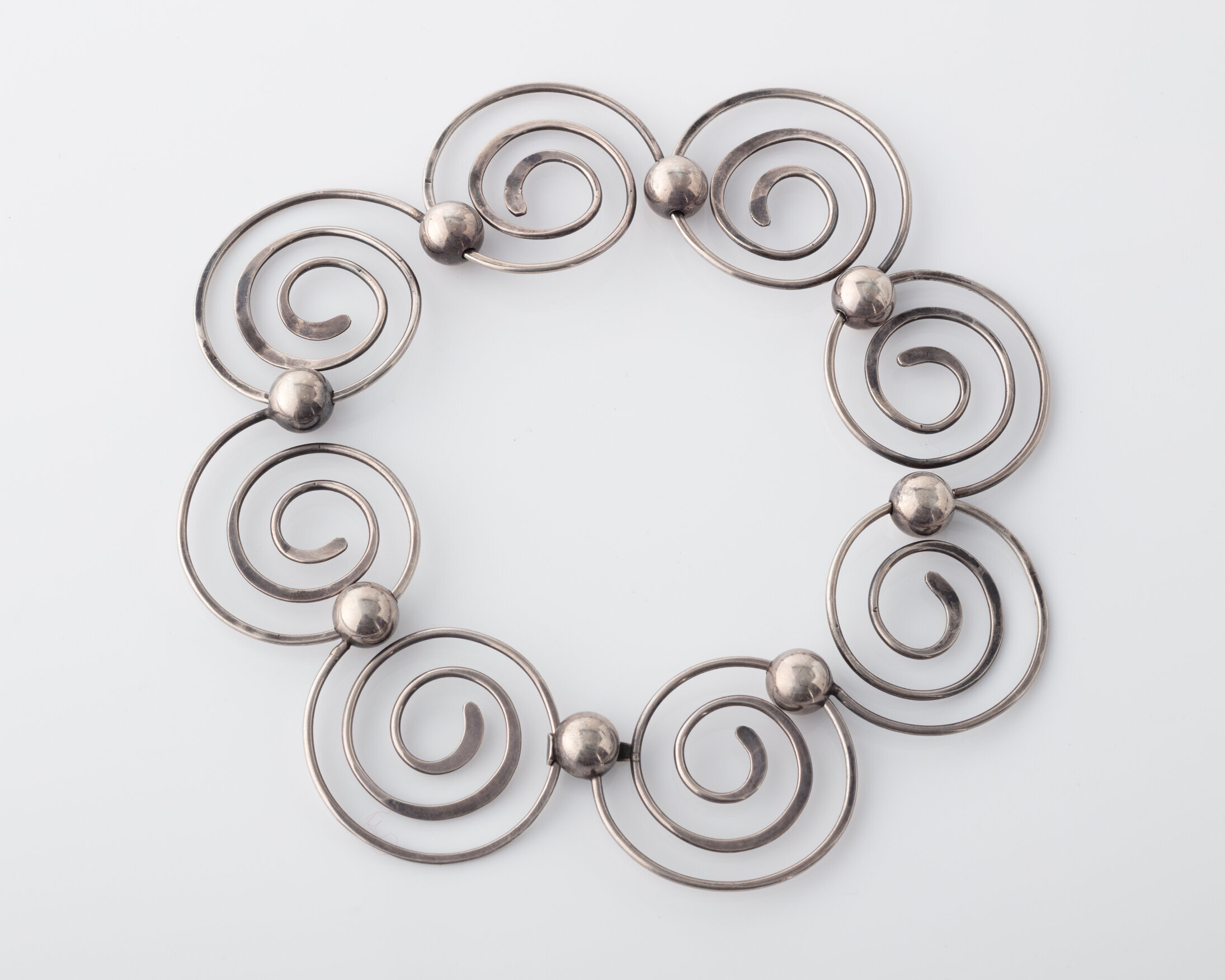
Smith was a jeweler for his era, a designer for individualists, and an artist whose work will always be appreciated because of its timeless sculptural qualities and its reverence for the human body.
- Toni Lesser Wolf in Arthur Smith: A Jeweler's Retrospective (1990)
Art Smith used jewelry to communicate the idea that Black is beautiful. Fittingly named considering his remarkable talent, Smith lived in Greenwich Village in New York City and developed his own unique variant of organic design between 1940 and 1970. He adapted the familiar, curvilinear lines associated with the period, but elevated the style with elements borrowed from constructivist sculpture and African art. Through his work, Smith redefined how modern Americans perceived and understood adornment.
"I don't think I was a child saying, I want to be an artist, I want to be an artist...but by the time I was finishing high school I was using the words 'art' and 'artists'," Smith recalls in "Arthur Smith: An Autobiography" (1990). Even though he anticipated the discrimination that he would face in pursuing an artistic career, Smith yearned to further his education in the field and applied to a scholarship program at Cooper Union.
Upon being accepted, Smith explored everything from sculpture and decorative design to painting and architecture. He described this experience at Cooper Union as time of discovery, but also frustration. Smith knew that only six Black students were allowed into the program at a time, severely curtailing the possibilities of artists of color to advance their practices.
When looking for part-time work, Smith met Winifred Mason, a young jewelry-maker. He collaborated with her for 4 years on West 3rd Street, building a space of intellectual and social liberation. "It was in the midst of compatible neighbors and friends, people like Bill Attaway, Charles Seabry, Ralph Ellison, Archer Winston. . .I mean, it wasn't all Black. We got to know each other. It was a marvelous place," Smith remarked.
Soon after, Smith opened his own shop on Cornelia Street, honing his style and building his own reputation. While he garnered a diverse clientele, Smith's work reached its full potential when worn by African American models and dancers. Smith's floating, abstract metals became a source of empowerment.
The Art Smith pieces featured in OBJECTS: USA 2020 represent the quintessential manner and grace of his work. From his Spiral and Half and Half necklace to his famous cuff bracelet, the organicism in each piece draws the viewer in as it mimics the natural lines of the body. While Smith's oeuvre is often compared to the metalwork canon of Africa, his jewelry references American art and design (most notably Alexander Calder), while also providing accessibility and representation. Simply put, Smith created art to uplift Black and African American communities; a pursuit that was as important then, as it is today.

